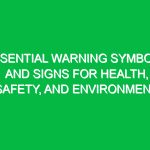Introduction
Good morning, team! Today, we’re holding a toolbox talk focused on a critical aspect of our work Environment—winter weather. As the temperatures drop and the snow begins to fall, it’s essential to recognize the challenges and Hazards that come with this season. This talk aims to equip you with the knowledge and practices needed to ensure your Safety and the Safety of your coworkers during winter conditions. Let’s dive into understanding how we can navigate winter weather effectively within our Health, Safety, and Environment (HSE) framework.
Understanding Winter Weather Hazards
Winter weather can present a variety of hazards that can lead to accidents if not properly managed. These hazards include:
- Slips, Trips, and Falls: Icy walkways and snow-covered surfaces can lead to serious injuries.
- Frostbite and Hypothermia: Prolonged exposure to cold temperatures can affect your health severely.
- Vehicle Accidents: Poor visibility and icy roads increase the risk of accidents while commuting.
- Equipment Failures: Cold weather can impact the functionality of machinery, leading to potential accidents.
Recognizing these hazards is the first step in mitigating risks associated with winter weather. Each of us plays a vital role in ensuring safety by being aware of these dangers and taking appropriate Precautions.
The Importance of Preparation
Preparation is key when it comes to managing winter weather conditions. Here are some essential steps you should take to prepare:
- Dressing Appropriately: Wear layers of clothing made from moisture-wicking materials. Don’t forget insulated gloves, hats, and waterproof boots.
- Vehicle Readiness: Ensure your vehicle is equipped for winter conditions. This includes checking tire conditions, keeping an emergency kit, and ensuring your wipers and fluids are winter-ready.
- Work Area Inspection: Before starting work, inspect your area for potential hazards like ice accumulation and ensure that walkways and entrances are clear.
By taking these steps, you can minimize risks and ensure that you and your coworkers are prepared for the challenges that winter presents.
Best Practices for Staying Safe
Now that we understand the hazards and the importance of preparation, let’s discuss some Best Practices for staying safe during winter weather:
1. Maintain Clear Pathways
Regularly check and clear walkways and work areas of snow and ice. Use salt or sand to improve traction. If you notice someone struggling with a heavy load, offer to help them navigate slippery areas safely.
2. Use Proper Lifting Techniques
When lifting snow or clearing pathways, remember to bend your knees and keep your back straight. This reduces the risk of injury. If the snow is heavy, consider using a snow blower or a shovel designed to decrease strain on your body.
3. Stay Hydrated and Take Breaks
It’s easy to forget to drink water in the cold, but hydration is vital, especially when working hard in winter weather. Take regular breaks to warm up and hydrate, and watch for signs of cold stress or fatigue in yourself and others.
4. Communicate Effectively
Maintain open lines of communication with your team. If you notice a hazardous condition, report it immediately. If you’re feeling unwell or too cold, let your supervisor know. A safe work environment relies on every team member’s awareness and readiness to act.
Real-Life Examples and Scenarios
Let’s take a moment to discuss a couple of real-life scenarios to illustrate the importance of these practices:
Scenario 1: Icy Walkways
Last winter, a worker slipped on an icy pathway while carrying equipment. The lack of proper footwear and the absence of salt on the walkway contributed to the incident. This serves as a reminder to always wear appropriate footwear and to clear pathways regularly. If you’re unsure about conditions, ask your supervisor for guidance.
Scenario 2: Cold Exposure
Another example involves a team member who worked outside for an extended period without taking breaks. They began to experience symptoms of hypothermia, such as shivering and confusion. Thankfully, coworkers noticed and took action quickly, getting them warm and to a medical professional. This situation underscores the importance of regular breaks and monitoring each other for signs of cold stress.
Compliance and Regulations
It’s essential to understand that our company policies regarding winter weather are not just suggestions but are often aligned with local regulations and Standards. Compliance with safety regulations, such as OSHA guidelines, not only protects you and your coworkers but also helps avoid legal consequences for the company.
For example, ensuring that all Safety Gear is up to standard and that your work area is free from hazards is not just a best practice; it’s a requirement. Familiarize yourself with our company’s specific policies regarding winter weather, and do not hesitate to reach out for clarification if needed.
Actionable Advice for Winter Weather Safety
As we wrap up today’s toolbox talk, here are some actionable pieces of advice to implement immediately:
- Review your personal winter gear and ensure you have everything needed for safety.
- Participate in any scheduled safety Training specific to winter weather.
- Promote a culture of safety by encouraging your coworkers to share their experiences and tips regarding winter conditions.
- Keep emergency contact numbers handy, including local emergency services and your supervisor.
Discussion and Engagement
Before we conclude, I want to open the floor for discussion. What are some experiences you have had with winter weather? How did you handle them, and what can we learn from those experiences? Your insights are invaluable in fostering a safer work environment.
Conclusion
In conclusion, the importance of safety during winter weather cannot be overstated. By understanding the hazards, preparing effectively, and implementing Best Practices, we can work together to maintain a safe workplace. Thank you for your attention and your commitment to safety. Let’s make this winter season a safe and productive one!


